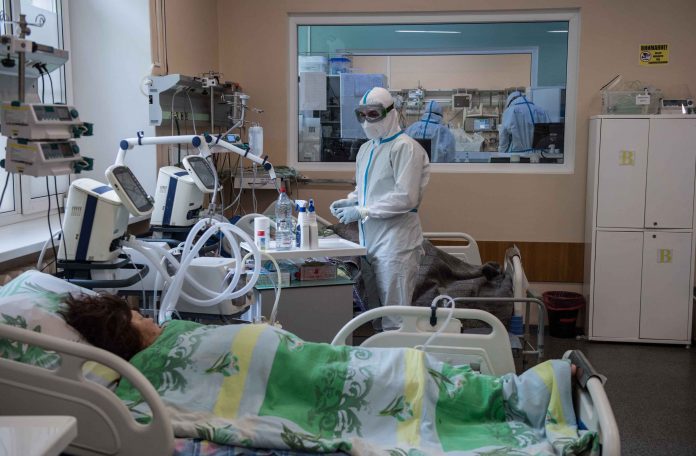The pandemic has reiterated the need to go back to basics such as effective surveillance, preparedness and capacity building and implementing infection control practices in hospitals. We are learning to develop pandemic friendly infrastructure to be better prepared in the future.
By Dr KK Aggarwal
India has the second-highest number of coronavirus infection cases in the world. The number currently stands at 5.7 million and continues to increase. India adds almost one lakh cases every day to its tally of total cases. At this rate, it is expected to soon surpass the United States, the country with the highest number of Covid-19 cases.
While these numbers may sound ominous, the silver lining is the recovery rate. According to Health Ministry data, the number of patients recovering from the illness is more than the number of new cases, a trend which has been sustained for five consecutive days. The national recovery rate has reached 81.25 percent.
India accounts for almost 19 percent of the total global recoveries and is now the top most country in terms of recovery of Covid-19 patients. Another bright spot is the low mortality. At 1.59 percent, India has one of the lowest mortality rates globally. Efforts should be concentrated on further reducing mortality. The testing capacity has steadily improved. Today, India conducts more than 12 lakh tests every day, taking the total to more than 6.6 crore tests, according to official data. The national cumulative positivity rate is 8.52 percent with 48,028 tests per million. The number of Covid-19 testing laboratories is 1,751.
A majority of patients with Covid-19 are asymptomatic or have only mild infection. This is good and means that the country is moving towards herd immunity. Covid-19 has taught us how to manage a pandemic. It has reiterated the need to go back to basics such as effective surveillance, preparedness and capacity building, and implementing infection control practices in hospitals. We are learning to develop pandemic-friendly infrastructure to be better prepared against future such pandemics. Now more than ever, there is the need for greater collaboration among countries, to share information and learn from each other’s experiences.
India has now become self-reliant in terms of Personal Protective Equipment (PPE) production. From importing PPE kits to becoming the second-largest manufacturer of PPE in the world, India has come a long way in a short span of time since the pandemic entered the country. India is also manufacturing ventilators to meet its requirements, although less than 0.5 percent of Covid-19 patients are on ventilators.
Notified TB cases have declined by 26 percent during January to June 2020 in comparison with last year, due to the Covid-19 pandemic. India has adopted a policy of bidirectional TB-COVID screening under which all newly diagnosed TB patients or those currently on treatment are tested for Covid-19 and all Covid-19 cases are screened for TB symptoms. Persons with influenza-like illness (ILI) or severe acute respiratory infections (SARI) are also screened for TB. This will help the country realise its goal of ending TB by 2025.
There have been fewer deaths due to road accidents this year. According to data provided by states and UTs to the Supreme Court Committee on Road Safety, 20,732 people died in road accidents between April and June vis-à-vis 41,032 during the same period last year, showing a decline of almost 50 percent. While this decline can be attributed to the fewer number of vehicles on the roads, a decline of 8 percent from January to March compared to 2019 was also seen following enactment of the new Motor Vehicles Act with provisions for strict penalties. A drastic improvement in air pollution levels across India was recorded during the lockdown. There is a lesson to be learnt here. A lockdown of 1-2 days may help if pollution levels are very high.
There is now greater public awareness regarding infectious disease prevention. Hand hygiene is the simplest and least expensive method of infection control. Improved hygiene and sanitation have reduced the number of cases of typhoid, jaundice, summer diarrhoea and Japanese encephalitis. As per data from the South Delhi Municipal Corporation’s anti-malaria operations, the number of malaria and dengue cases in September in the national capital have been the lowest for the same month in the last five years. People are learning to live with their families. Better and stronger interpersonal relationships have reduced stress in day-to-day lives and improved health and well-being. Reduced air pollution and stress translated to fewer heart attack, asthma, stroke cases.
Much of the focus these past months has centred on Covid-19. Most resources have been directed towards managing it. As life slowly returns to normal, albeit the “new normal”, we have to learn to live with Covid-19 and not fear it. People must step out to seek medical care for non-Covid illnesses as and when needed and not miss out on their follow-ups, while following all precautions for Covid-19. Universal masking is the key to controlling the pandemic, complemented by physical distancing and hand hygiene.
The writer is President, Confederation of Medical Associations in Asia and Oceania, and former National President, IMA
Lead Picture: UNI


